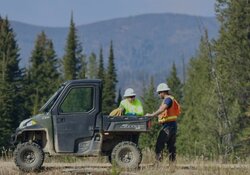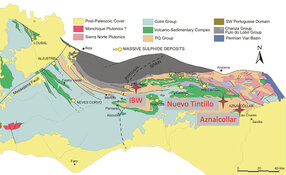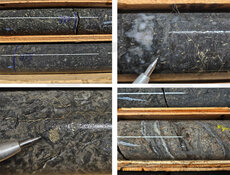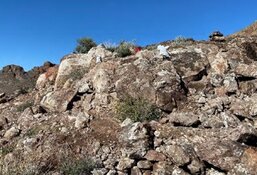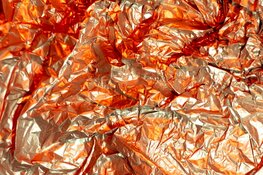Jon Hykawy: The most important thing is to recognize is that the production of rare earth elements is still mining; so many of the same rules that hold for a gold explorer or a copper explorer continue to hold for a rare earths company. That includes minimizing your mining costs by having high-grade deposits. It certainly includes some things that aren't common to other types of exploration, like finding deposits with attractive metallurgy so that processing costs are minimized, and concentrating on deposits that have the potential to produce significant amounts of the heavy rare earth elements (HREEs) as opposed to lighter rare earth elements (LREEs).
For a lot of these deposits the mantra would be metallurgy, metallurgy, metallurgy. It is easy to find rare earths; it's even fairly easy to find concentrated amounts of rare earths, but finding concentrated rare earths that you can remove from the ground economically depends on the mineralogy and the metallurgy, and that is of primary importance.
TGR: What are some elements in REEs that sometimes render what would otherwise be an economic deposit uneconomic?
JH: There are contaminants that can limit the ability to conduct economic work on a deposit or even limit the ability to exploit it at all. Thorium is one of the more common contaminants that you find accompanying many rare earth element deposits. Thorium is a radioactive element that someday may have uses in the nuclear power industry but, right now, if you have enough of it in a deposit, your tailings are radioactive. You must have the appropriate permitting to store those tailings, or you're never going to start a mine.
REEs occur in many different types of deposits, but, broadly speaking, they're either going to occur in materials like carbonitite, which as the name implies is a non-silicon-based, carbon-based material, or in silicates. Silicates, though, have often proved difficult to process. The former Soviet Union for years conducted exploration programs for every one of the resources they could find inside its borders. They had huge numbers of deposits of rare earth elements that were in silicates, many in material called eudialyte, and unfortunately never found an economic method of processing those. The rare earths were there, but they could never be extracted. This is still an issue for companies today.
TGR: Will technology eventually solve that riddle?
JH: Somebody certainly will crack the code in getting REEs out of silicates. As long as REEs prices increase, that processing will become more and more economical over time. But at present there really is no good way around that.
TGR: You mentioned that there are "light" and "heavy" rare earth elements. Please explain the difference between those.
JH: REEs are commonly recognized as 17 elements, which are used in a wide variety of industries.
They typically include what are called the lanthanite elements, the elements that start with lanthanum on the periodic table and run from Atomic Number 57 up to 71, but we also include scandium and yttrium as part of these static materials.
The light rare earth elements are the ones that have the lowest Atomic Number; so you would include in that, as far as the lanthanites are concerned, lanthanum, cerium, praseodymium and a material called neodymium. These are of interest, neodymium especially, because these are used in common rare earth magnets that we find in industry. If you're looking at building a new hybrid vehicle or an electric car, you will probably use neodymium iron-boride magnets in the motor in that car. Rare earth magnets produce an incredibly intense field, much stronger than any other magnet materials that we have identified. That makes that motor small, light and highly efficient. When you're trying to build a hybrid vehicle or an electric vehicle that has to travel a reasonable distance on a limited amount of electrical energy stored in a battery, you want the most efficient motor you can build.
They're fairly abundant, the light elements. The heavies are much less so, and the heavies include, in particular, two elements that we're interested in—dysprosium and terbium. While you can produce strong and very intense magnets with neodymium, in order to use them at the high temperatures in electric vehicles, you need to add dysprosium and terbium. Those elements allow the magnet to maintain its strength even at high temperatures. Without those, you've got a wonderful motor that can only operate at room temperature.
The value of heavy rare earth elements in the market is actually much, much higher per kilogram than the lights simply because they are rare and you absolutely have to have them to enable some of these new clean applications. These things really are not interchangeable with one another.
TGR: Are you saying that there's virtually no likelihood that we're ever going to find replacement metals for some of these applications?
JH: We've been looking for a long time to find materials that can produce the same sort of field strength and intense magnetic fields that these rare earths can. There are only a limited number of elements on the periodic table, and the best magnets today, the most intense magnets by quite a factor, are either produced using neodymium or another rare earth called samarium. There really isn't any replacement. At 200ºC, which is far below the temperature that you're going to get under the hood of your car, one of these rare earth magnets without terbium and dysprosium will not function well. The field won't drop to zero, but the motor will not produce nearly the power that it can when it's operating at a much cooler temperature. And they're not added at inconsequential levels of an alloying agent either; these magnets require 4%–5% concentrations of dysprosium and terbium.
TGR: In terms of weight, how much dysprosium and terbium are in the average hybrid engine?
JH: In the sense of an actual absolute weight, it is not that much. The entire magnet set in a Toyota Prius, for example, is probably 600 grams; so, you' re looking at 200 grams of neodymium required in those magnets. In terms of dysprosium, you're probably talking only 30 grams. It's not that much, but the problem is world production of these materials is relatively small; there's simply not that much being produced. It's all produced in China; in fact, in the case of dysprosium, you could say almost 100% is produced in China. The Chinese are starting to clamp down on their legal mining operations, and that's going to limit the amount of these materials available to the market. Period.
TGR: I thought only about 90% of the world's REEs are produced in China.
JH: It's actually a little higher, and of the valuable heavies, it's probably more like 97% or 98%.
TGR: Alright, given that most of the REEs are produced in China and that China produces just about everything that we use here in the West, is there really a market for these elements outside of China?
JH: There absolutely has been. What the Chinese have produced to date has been the rare earth oxides. In effect, they mine the mineral and concentrate it to the point where you're getting a relatively pure neodymium or a relatively pure samarium oxide. Then they take those materials and convert them to metals used to produce magnets or magnet components. To date, for the most part, those purified oxides have been shipped out of China to and processed by companies in the West. These companies use their own technologies to produce the magnets and assemble the motors, generators, or whatever.
That's not what the Chinese are envisioning, though. I think that by limiting the export of these materials, China is intending to move a lot of those refining operations and a lot of those final assembly operations into China. This is a still a very labor-intensive operation at that stage, and China is trying to bring those higher value jobs back to China. Unless we actually produce alternative sources of REEs outside of China, frankly, the companies in the U.S. and Europe and elsewhere will have no choice; those jobs will go to China because that's where the material is. We still consume most of the end products; it is not the Chinese buying electric cars. It's Europeans and Asians in Japan and Korea and people in Europe who are buying those, but it's the Chinese who are going to be ultimately building those for the next few years, unless we find alternatives.
TGR: How does that affect a company like Great Western Minerals Group Ltd. (TSX.V:GWG)? It has a Michigan-based facility that processes REEs ore into oxides.
JH: It's something that Great Western has to look at, and it's one of the reasons Great Western is moving as rapidly as it can toward commercializing Steenkampskraal, the rare earth mine in South Africa. That mine is potentially capable of producing 5,000–10,000 tons of rare earth oxides per year; that would more than feed Great Western's entire operation and all of their customers. It would probably leave them with some additional material that they could sell to others. And, frankly, it's their best route in the near term to becoming free from the restraints that the Chinese export quotas put on companies in the space.
TGR: So Great Western is looking for REEs ore from places other than China to supply its REEs metals business in Michigan.
JH: Very definitely. Both their operations in Michigan and their operation in England use rare earths. They use the term "mine-to-market" provider of rare earths; I tend to think it more as a cradle-to-grave operation because they're taking the monzonite sands out of the mine and processing them into magnet alloys, their final resting place. Great Western will ship the final alloys in completed form to customers in Japan or Korea that produce the finished magnets.
TGR: But that's a niche market.
JH: Today it is a niche market, but you'd be surprised at the number of applications that use rare earths. The rare earth industry was given a huge shot in the arm back in the 1980s when Sony came out with the Walkman, the original portable cassette player, because samarium-cobalt magnets were the only ones light and efficient enough to allow you to build a tape player that was powered by two AA batteries. That was a significant use of samarium at the time; the world market likely went up by 30%–40% because of that device. Now, rare earths find uses in ear-bud headphones, hard drive disk motors, electronics, lighting, and on and on.
TGR: Does ore from the Steenkampskraal REEs deposit in South Africa contain more LREEs or HREEs?
JH: That is an interesting point, actually. In technical terms, it would be considered a light deposit, because if you totaled up the percentages of the elements that are on the light side of the spectrum, it leans very heavily towards those. But it is extremely high grade; it is one of the highest grade deposits ever identified. For example, the largest Chinese mine, the Baiyun Obo mine near Baotou, Inner Mongolia, is also a light deposit. If memory serves, the grade is around a 6% deposit, quite good. The Chinese mine has 98% LREEs. Steenkampskraal has the highest concentration of rare earths identified anywhere at about 17%, and is only 90% LREEs.
Even though this is a light deposit, every ton of raw ore you would pull out of Steenkampskraal would produce a very high volume of rare earth oxides. As a result, the production of heavies like dysprosium and terbium but also things like europium that is used in phosphors and semiconductors would be quite high. Be aware of that grade effect because even though it's a relatively small percentage of heavies, you can't sell a percentage; you can only sell a ton. And the number of tons that Steenkampskraal and other high-grade projects will produce is going to be significant.
TGR: Alright, what are some juniors that have the significant HREEs deposits?
JH: Probably the best known is Avalon Rare Metals Inc. (TSX:AVL;OTCQX:AVARF)'s Nechalacho project in Canada but it has a couple of factors working against it. One is that it's relatively low grade at 1.9%, and the fact that it's an underground project, so the mining costs would be slightly higher than they would for an open-pit operation. What it has working in its favor are relatively high concentrations of the HREEs. For instance, Nechalacho's dysprosium grade is up around 3%, whereas Steenkampskraal's at about 0.7%.
The downside, though, as far as we we're concerned, is that we have not been able to reconcile the company's public statements on the cost of processing with some of the work they've published on metallurgy. Avalon has just announced some results from its prefeasibility study and will publish the complete document soon. Its operating costs per kilogram of finished product are high at $5.93, and this makes the economics of the project difficult.
TGR: What are some others?
JH: Another one we hope to see producing relatively soon is Lynas Corporation (ASX:LYC)'s Mount Weld project in Australia. That's an open-pit project with a relatively high strip ratio, so it's going to be fairly expensive to open pit mine. But Lynas plans high production rates, and they can because their grade is very high. Steenkampskraal is the highest grade ever seen at 17%; Mount Weld is at 12%. It's a light deposit; it would produce fairly high levels of lanthanum and cerium. The economics of the project to some extent depend upon lanthanum and cerium, and that tends to be a drawback because most of these deposits, even the heavies, produce significant amounts of those two elements. They're likely to be in oversupply. The Chinese probably won't leave export quotas in place on lanthanum and cerium, and may even—they've certainly done it before—flood the market with those two elements. If they do, the economics of some of these new projects could be damaged. Even though Mount Weld has a significant amount of neodymium—about 19% of the REEs is neodymium, the magnet material that we're interested in—it could be difficult for Lynas to make an economic go of it.
Another good example of a REEs project is the Mountain Pass project in California that belongs to privately held Molycorp Inc. The media has been full of speculation regarding an IPO from Molycorp. It's a very good mine, historical producer, 7% grade, very high planned production, but 84% of the REEs that would come out of that project would be lanthanum and cerium.
TGR: It's not being mined yet, is it?
JH: It was mined historically; it hasn't been restarted. I'm hopeful that one is going to restart, but at 84% it's very difficult to see how that project would make an economic go of it, especially if the Chinese decide to flood the market with lanthanum and cerium. The other issue is that I don't believe Molycorp is permitted to handle any sort of radioactive waste or any sort of radioactive tailings. If there is any thorium associated with this project, it could prove difficult to get a mining permit in California. That's one of the big hold ups for any of these projects—all the permitting that is required.
TGR: On January 1, 2010 Avalon Rare Metals was trading at $2.96 but had dropped to $1.98 as of early June. Quest Rare Metals, another big name in the REEs space, went from $3.23 to $2.15 over the same timeframe. Why have the rare earth juniors taken such a beating this year?
JH: That's a good question; it's certainly not related to the price of rare earths because the price of rare earths has been moving up pretty much day by day. My guess would be that some people are feeling less certain about the near-term economy. The other side may be that people are starting to realize that the path to commercialization for these companies is a lot more difficult than they thought when they first bought the name.
TGR: How so?
JH: This is a very complex process. We're delving pretty deeply into the issues around processing and dealing with the rare earths, but refining them, concentrating these rare earth oxides and producing significant quantities of separated REEs is actually very complex and capital intensive. This is not for the faint of heart. Avalon's release on its prefeasibility study suggests capital costs might be as high as $900 million. The Chinese are really the only ones who have started mines. Mines have been shut down outside of China since it entered the market in force, because the Chinese came in with such low pricing that no one else could really afford to compete. It's only in the last little while that demand has moved up, prices have moved up, so mines outside of China can contemplate coming back into production.
TGR: At the same time, Jon, you believe there are good investment opportunities in this space.
JH: Oh, absolutely. Longer-term, there's absolutely no question that we're going to need significantly more REEs. No matter how you slice it we're moving toward a world where energy is becoming more and more expensive and where it's becoming cost effective to be more energy efficient. In electric and hybrid vehicles, compressors, electric motors, and anything else, rare earths offer the ability to be far more energy efficient. Now, of course, there is an economic tradeoff. If REEs continue to move up in price, the magnets become more expensive. If the magnets become more expensive, naturally the motor or the generator becomes more expensive and it's back to that simple economic argument about whether it's worthwhile. Those arguments are fairly easy to overcome when you're talking about an electric vehicle or a hybrid; it's a little more difficult when you're talking about your refrigerator and whether you want to use rare earth magnets in that.
TGR: What about military applications like guidance systems and things like that?
JH: Unfortunately for the rare earth industry, a lot of the military applications don't require large quantities of REEs. There's certainly an interest in guaranteeing supply for the military, but there's less of an issue of absolute amounts of rare earth materials.
TGR: Certainly Western-based producers are more likely to benefit from military uses for REEs given that they're in American-friendly jurisdictions.
JH: All of that is going to be sourced from hands that are as friendly as possible; certainly, the American military doesn't want to go to a Chinese company and try to explain what part they want made, made out of what, and why because that would hand over significant knowhow. By the same token, the quantities they're using are not that huge. The benefit will certainly be there for domestic providers, but it's not going to be huge quantities at huge dollars.
TGR: You said there are good investment opportunities in REEs. There are all kinds of names—Dacha Capital Inc. (TSX.V:DAC; OTCQX:DCHAF), Medallion Resources (TSX.V:MDL), Commerce Resources Corp. (TSX.V:CCE; Fkft:D7H; PK SHEETS:CMRZF), Rare Earth Metals Inc. (TSX.V:RA), Midland Exploration Inc. (TSX.V:MD)—which companies are you following?
JH: Of the junior explorers and potential producers out there, the only name that we're actively covering is Great Western, but we shadow a large number of others. We look for companies that have those metrics that I mentioned earlier—fairly high grade in the ground; simple metallurgy, and by that we mean where the metallurgy has already become largely a solved problem; basically looking for deposits that lean toward the elements we're most interested in, which includes the magnet materials like neodymium, praseodymium, or the materials that allow those materials to operate at high temperatures like dysprosium and terbium.
If it's a high-grade deposit with known metallurgy, that would be absolutely perfect, but unfortunately, we haven't identified any of those. On the other side of the equation, there are companies like Dacha; Dacha is a trading company that actually trades the physical rare earths. We like that story because Dacha can concentrate specifically on the rare earths that matter. They can look at the market and say, "You know what? We believe that dysprosium and terbium are going to be in short supply." For instance, they recently announced that they had bought eight tons of dysprosium and terbium. They can concentrate specifically on those without having to worry about lanthanum and cerium. That gives them significant advantages.
TGR: What will be the first REEs project to enter production?
JH: My guess is Mount Weld, Lynas' project. The planned production is not ridiculously high at 10,500 tons annually; they've got very high grade. Yes, it is a light deposit; leaning toward lanthanum and cerium more than anything else, but it's also a strong project in a good jurisdiction. Lynas is going to do the processing in Malaysia. That makes some sense because it moves the finished materials closer to end users in Asia.
Of the others, Great Western is one of the ones we like because it's that cradle-to-grave mentality, the ability to capture as much of the value chain as possible. I would say they're the only company outside of China that has tried to assemble anything like this knowledge base in one company.
TGR: Can you comment on Medallion's Eden REEs project?
JH: It's early stages there; if they can find quantity of material at grades similar to what they've found in grab samples, that one is a very, very interesting project. But, again, it's very early days.
Jon Hykawy is currently with the Research team at Byron Capital Markets, with a specialized focus in the Lithium and Clean Technology/Alternative Energy industries. Jon holds both a PhD in physics and an MBA from Queen's University and has been working in capital markets as a clean technologies/alternative energy analyst for the last four years. He began his career in the investment industry in 2000, originally working as a technology analyst. His current area of focus is the lithium sector, ranging from availability and production to lithium battery technology. He has extensive experience in the solar, wind, and battery industries, conducting significant research in the areas of rechargeable batteries, ranging from rechargeable alkaline to lithium-ion to flow batteries. Jon is also fluent in Spanish and Ukrainian.
Want to read more exclusive Gold Report interviews like this? Sign up for our free e-newsletter, and you'll learn when new articles have been published. To see a list of recent interviews with industry analysts and commentators, visit our Expert Insights page.
DISCLOSURE:
1) Brian Sylvester of The Gold Report conducted this interview. He personally and/or his family own the following companies mentioned in this interview: None.
2) The following companies mentioned in the interview are sponsors of The Gold Report: Dacha, Medallion, Midland, Avion, Commerce and Great Western Minerals.
3) Jon Hykawy: I personally and/or my family own shares of the following companies mentioned in this interview: None. I personally and/or my family am paid by the following companies mentioned in this interview: None.


